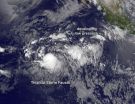(Press-News.org) There is an increased risk of severe perineal tearing during childbirth in women who had such a tear in a previous delivery, suggests a new study published today (9 July) in BJOG: An International Journal of Obstetrics and Gynaecology (BJOG).
This study, investigates among women who have had a third or fourth degree perineal tear, the mode of delivery in subsequent pregnancies and the recurrence of severe perineal tears.
Most women tear to some extent during childbirth and in some women the tear may be more extensive. A third degree tear extends downwards from the vaginal wall and perineum to the anal sphincter, the muscle that controls the anus and a fourth degree tear extends to the anal canal as well as the rectum. In England, the rate of reported severe perineal tears has tripled from 1.8% to 5.9% between 2000 and 2012.[1]
The study used a cohort of 639,402 first-time mothers who had a vaginal delivery of a single baby between April 2004 and March 2011 and a second birth before April 2012. Data came from the Hospital Episode Statistics (HES) which includes all maternity admissions in NHS hospitals.
Results show that the prevalence of third or fourth degree tearing at first birth for the cohort was 3.8%. Among women who had a third or fourth degree tear at first birth, 24.2% were delivered by elective caesarean section, compared with 1.5% of women who did not tear at first birth.
Furthermore, the report found that among women who had a vaginal delivery at second birth, the rate of a severe tear was 7.2% in women with a tear at first birth, compared to 1.3% in women without, a more than five-fold increase in risk.
Other risk factors to increase the risk of third and fourth degree tearing at second birth include; high birth weight, forceps delivery and the presence of shoulder dystocia. Additionally tearing was higher in older women, women living in the least deprived communities and in Asian women, notes the report.
The authors of the study recognise the risks associated with an elective caesarean, and decisions about subsequent mode of delivery in women who had a severe perineal tear in an earlier pregnancy must be weighed against the clinical and psychological impacts of severe perineal tearing.
Dr Leroy Edozien, a consultant obstetrician from the University of Manchester and co-author of the study said:
"Our study shows that the relative risk of a repeat tear is a five-fold increase and the absolute risk of a repeat tear is about 7 in 100. Clinicians should communicate both the relative and the absolute risk when discussing mode of delivery with women who suffered a severe tear in their previous pregnancy."
Dr Ipek Gurol-Urganci from the London School of Hygiene and Tropical Medicine and co-author added:
"Our results emphasise the need for clear national guidance for healthcare professionals on the optimal mode of delivery for women with a prior severe perineal tear so that they can be counselled appropriately."
John Thorp, BJOG deputy editor-in-chief said:
"This study captures over 96% of all deliveries in NHS hospitals in England over a 7 year period, and represents the first piece of research into the mode of delivery and recurrence rate in a pregnancy subsequent to a third or fourth degree perineal tear.
"The results highlight the increased risk of severe tearing in women who have a third or fourth degree tear in their first delivery and therefore will help women along with a multidisciplinary team of healthcare professionals to make decisions about the mode of delivery in future pregnancies to ensure the best outcomes for mother and baby."
INFORMATION:
Mode of delivery following a perineal tear and recurrence rate in subsequent pregnancies
2014-07-09
ELSE PRESS RELEASES FROM THIS DATE:
Fun or exercise?
2014-07-09
Think of your next exercise workout as a "fun run" or as a well-deserved break, and you'll eat less afterward. Think of it as exercise or as a workout and you'll later eat more dessert and snacks to reward yourself.
These new findings from the Cornell Food and Brand Lab study involved two studies where adults were led on a 2 km walk around a small lake and were either told it was going to be an exercise walk or a scenic walk. In the first study, 56 adults completed their walk and were then given lunch. Those who believed they had been on an exercise walk served and ...
New plant species from the heart of Texas
2014-07-09
SALT LAKE CITY, July 9, 2014 – Collectors found the first two specimens of the prickly plant in 1974 and 1990 in west Texas. Then, for two decades, the 14-inch-tall plant was identified wrongly as one species, then another and then a third.
Now – after a long search turned up a "pathetic, wilted" third specimen – a University of Utah botanist and her colleagues identified the spiny plant as a new, possibly endangered species and named it "from the heart" in Latin because it was found in Valentine, Texas, population 134 in 2010.
Most new plant species are found in the ...
Minimally invasive surgery underused at many US hospitals
2014-07-09
Hospitals across the country vary substantially in their use of minimally invasive surgery, even when evidence shows that for most patients, minimally invasive surgery is superior to open surgery, a new study shows. The finding represents a major disparity in the surgical care delivered at various hospitals, the study's authors say, and identifies an area of medicine ripe for improvement.
"Some surgeons specialize in complex open operations, and we should endorse that expertise," says Marty Makary, M.D., M.P.H., a professor of surgery at the Johns Hopkins University School ...
Carbon monoxide predicts 'red and dead' future of gas guzzler galaxy
2014-07-09
Astronomers have studied the carbon monoxide in a galaxy over 12 billion light years from Earth and discovered that it's running out of gas, quite literally, and headed for a 'red and dead' future.
The galaxy, known as ALESS65, was observed by the Atacama Large Millimeter Array (ALMA) in 2011 and is one of less than 20 known distant galaxies to contain carbon monoxide.
Dr Minh Huynh from The University of Western Australia node of the International Centre for Radio Astronomy Research (ICRAR) led the team on their search for galactic carbon monoxide in work published ...
Health-care worker hand hygiene rates increase three-fold when auditors visible
2014-07-08
Hand hygiene rates were found to be three times higher when auditors were visible to healthcare workers than when there were no auditors present, according to a study in a major Canadian acute care hospital.
The study, titled, "Quantification of the Hawthorne effect in hand hygiene compliance monitoring using an electronic monitoring system: a retrospective cohort study," published today on-line in the BMJ Quality & Safety Journal, by first author Dr. Jocelyn Srigley, who did the study as part of her Master's thesis while a Clinical Fellow in Infection Prevention and ...
LJI develops new approach to identify genes poised to respond in asthma patients
2014-07-08
SAN DIEGO – July 8, 2014 In a study published yesterday in the scientific journal Nature Immunology, a group at the La Jolla Institute (LJI) led by Pandurangan Vijayanand, Ph.D. identify new genes that likely contribute to asthma, a disease that currently affects over 200 million people world wide.
An organism's genetic material, also known as its genome, can be divided into small sections or 'neighborhoods.' Scientists can determine which genetic neighborhoods in a cell are active, or primed for gene production, by looking for a marker on the genome called an enhancer. ...
Astronomers bring the third dimension to a doomed star's outburst
2014-07-08
VIDEO:
NASA Goddard astrophysicists Ted Gull and Tom Madura discuss Eta Carinae and their new model of the Homunculus Nebula, a shell of gas and dust ejected during the star's mid-19th...
Click here for more information.
In the middle of the 19th century, the massive binary system Eta Carinae underwent an eruption that ejected at least 10 times the sun's mass and made it the second-brightest star in the sky. Now, a team of astronomers has used extensive new observations to create ...
NASA's SDO spots a summer solar flare
2014-07-08
The sun emitted a mid-level solar flare, peaking at 12:20 p.m. EDT on July 8, 2014, and NASA's Solar Dynamics Observatory captured images of the event. Solar flares are powerful bursts of radiation. Harmful radiation from a flare cannot pass through Earth's atmosphere to physically affect humans on the ground, however -- when intense enough -- they can disturb the atmosphere in the layer where GPS and communications signals travel.
To see how this event may affect Earth, please visit NOAA's Space Weather Prediction Center at http://spaceweather.gov, the U.S. government's ...
NASA-JAXA's new precipitation satellite sees first Atlantic hurricane
2014-07-08
VIDEO:
The animation begins with global infrared data showing the progression of the storm as it forms into a hurricane. Then GPM flies overhead measuring rain rates on the ground. GPM's...
Click here for more information.
The Global Precipitation Measurement (GPM) Core Observatory flew over Hurricane Arthur five times between July 1 and July 5, 2014. Arthur is the first tropical cyclone of the 2014 Atlantic hurricane season.
GPM is a joint mission between NASA and the Japan ...
Satellite sees newborn Tropical Storm Fausto being 'chased'
2014-07-08
Tropical Storm Fausto was literally born yesterday and strengthened to a tropical storm quickly. Satellite imagery from NOAA's GOES-West satellite shows a rounded Fausto being "chased" by a developing area of low pressure to the east of the storm.
NOAA's Geostationary Operational Environmental Satellite GOES-West captured a combination visible and infrared image of the Eastern Pacific on July 8 at 1500 UTC (10 a.m. EDT). In the image, Tropical Storm Fausto appeared as a rounded area of clouds, compared to the amorphous developing low pressure area behind it.
At 6:30 ...






